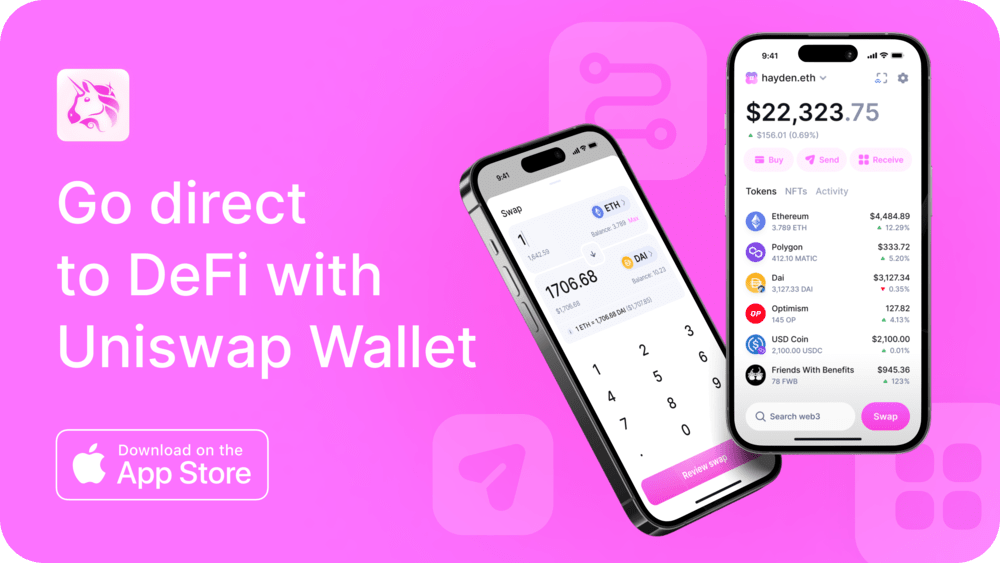The Tech Leveling Up Staking

Dear Bankless Nation,
We've been serving you up with plenty of post-Shapella markets content, but what's next for staking?
Today, we dig deeper into Distributed Validator Technology (DVT), an exciting breakthrough for the staking scene.
- Bankless team
What You Should Know About Distributed Validator Technology
Bankless Writer: Ben Giove

Ever since the Shapella network upgrade went live on April 12, the attention of crypto has been on the inflows and outflows from the Beacon Chain. But Ethereum’s staking landscape is still evolving. There are a plethora of other exciting infrastructure and application layer innovations that are poised to further shake up the ETH staking economy.
The most prominent example is Distributed Validator Technology (DVT), a protocol that aims to make staking easier and more accessible through the creation of a “multi-sig for validators.” DVT uses a smorgasbord of complex cryptographic techniques – distributed key generation, Shamir’s Secret Sharing, threshold signing, multi-party computation – to split control over a single private key among a group of different validators.
This means that a single validator can be "shared", by running on multiple machines in different locations by different entities.
DVT is not a proof-of-concept – it’s here. The two leading solutions are by Obol and SSV, and are progressing towards being fully implemented in production. The former entered its mainnet “Alpha Release” on April 20, while the latter launched its final testnet, JATO on March 30.
Intrigued? If so, let’s take a closer look into DVT by exploring:
- What benefits the technology provides
- The implications it will have on the staking landscape
Let’s dive in! 👇
What are the benefits of DVT?
The primary benefit that DVT provides is a reduced risk of slashing.
Slashing refers to a penalty incurred by validators, in the form of losing a portion of their stake, for not properly abiding by the rules of consensus. Slashing serves as an economic incentive for validators to play by the rules and not attempt any sort of malicious attack. Routine events, such as a validator going offline as a result of a power outage or experiencing downtime as a result of technical issues, can also trigger a slashing penalty.
Unintentional slashing events can have numerous downstream effects, such as potentially helping concentrate stake in large pools or protocols that are less vulnerable to these events at the expense of smaller pools or solo stakers.
DVT fixes this by providing redundancy and removing single points of validator failure. Under a DVT network, a validator that goes offline does not incur a slashing penalty as there will be numerous other instances in which their validator is still operational. This not only mitigates stake concentration by increasing returns for solo (and squad) stakers, it also increases the resilience of Ethereum as a whole (or other PoS chains that implement it in the future). Widespread adoption of DVT creates a more robust network that is less vulnerable to mass slashing events.
This is because with DVT, validators of all ilk can have their local machine be taken offline while still retaining uptime. As a result, this should increase their staking yields through being able to produce more blocks as well as enduring significantly smaller slashing events.
How will this affect the Ethereum staking landscape?
👨👩👧👦 Squad Staking
We’ve already touched on how DVT will impact solo staking, but let’s dive in a bit further.
Many solo stakers are at a disadvantage relative to professional stakers, as it is more difficult and expensive for an individual to create a robust and resilient staking setup relative to a well capitalized company. This in turn, gives professionals, and large staking pools, a notable competitive advantage. DVT should help close this gap, decreasing the delta between the yield earned by professional validators and by solo stakers.
But, DVT should also help unlock what’s known as squad staking. Squad staking refers to small groups of solo validators that are staking together.
'Squad staking' will be a big theme for ETH staking going forward
— sassal.eth 🦇🔊 (@sassal0x) April 14, 2023
Individuals with less than 32 ETH each can pool their assets together and run distributed validator technology on their own hardware in order to become a full validator
Decentralized staking takes many forms!
DVT helps enable a kind of group staking to be carried out in a trust minimized, secure fashion. For example, DVT can enable a group of friends who live all across the world, and may not have 32 ETH individually, to pool their funds and validate under one, robust system with reduced slashing risks.
This, coupled with modular liquid staking protocols such as Lido V2, StakeWise V3, and Stader (which I’ll touch on more below), could help top-notch squad stakers attract outside capital and compete with professional validator firms.
💧 Liquid Staking
DVT is set to play a major role in liquid staking.
Protocols like Lido have begun testing the technology, having run pilot programs with SSV and Obol on testnet. It should also play a big role in Lido V2, which will enable isolated groups of validators, known as modules, to integrate DVT.
Other staking protocols, such as Rocket Pool, will also be able to utilize DVT. Some on the rETH issuers governance forum have even speculated that it could enable the protocol to support zero ETH bonds for minipools rather than the 8 ETH one that is required today (though it’s worth noting that this is hypothetical).
StakeWise V3 should also fit hand-in-glove with DVT, as individual vaults on the platform will be able to easily plug into networks like Obol and SSV, while other staking solutions such as Diva are creating their own DVT solution, which may serve to differentiate them in an increasingly competitive LSD market.
As we can see, all signs point to widespread interest in utilizing DVT. In fact, should the technology become widely adopted due to its risk mitigation properties, use of DVT may become a prerequisite among LSD issuers who are hoping to attract any meaningful amount of stake.
Go direct to DeFi with the Uniswap mobile wallet. Buy crypto on any available chain with your debit card. Seamlessly swap on Mainnet and L2s. Explore tokens, wallets and NFTs. Safe, simple self-custody from the most trusted team in DeFi.
📈 Market Impact
Of course, the adoption of DVT will also have an impact on the markets, and presents opportunities for investors and airdrop farmers alike.
For starters, it should help buoy yields for stakers by reducing the number of slashing instances (at least on the margin). All things the same, this should increase the attractiveness of staking ETH, and in the long-run, help drive inflows into liquid staking protocols that support DVT.
Currently, the only tokenized DVT protocol is SSV, (whose token symbol also happens to be SSV). SSV is used for governance, as well as payments and collateral within the network. The project recently announced a $50M ecosystem fund to help spur adoption of DVT within the Ethereum ecosystem, and currently trades at an FDV of $299.1M. SSV is unique in that it is a “pick and shovel” staking play. This is because rather than have to bet on the success of one staking provider, SSV instead provides an exposure to all that incorporate it.
Obol has not confirmed whether they will launch a token, but given that they have raised $19M in total venture funding, it’s likely they will release one in the future as early backers look to realize their investment. This should likely present an interesting airdrop opportunity for early validators on the network.
Conclusion
As we can see, Shapella is not the only noteworthy thing happening in the world of staking.
DVT is another exciting development, representing a promising technology that can improve the resilience of Ethereum and the accessibility of solo staking while also unlocking new groups of stakeholders (pun intended) such as squad stakers.
Although DVT has yet to be fully implemented, the two leading solutions, Obol and SSV, are progressing towards a full rollout and have seen interest from an assortment of major liquid staking protocols.
DVT szn is coming. Are you ready for it?
Action Steps
- 📰 Read up on Everything You Need to Know About Shapella
- 📰 Read about the broader Ethereum roadmap on Where Does Ethereum Go Next?
